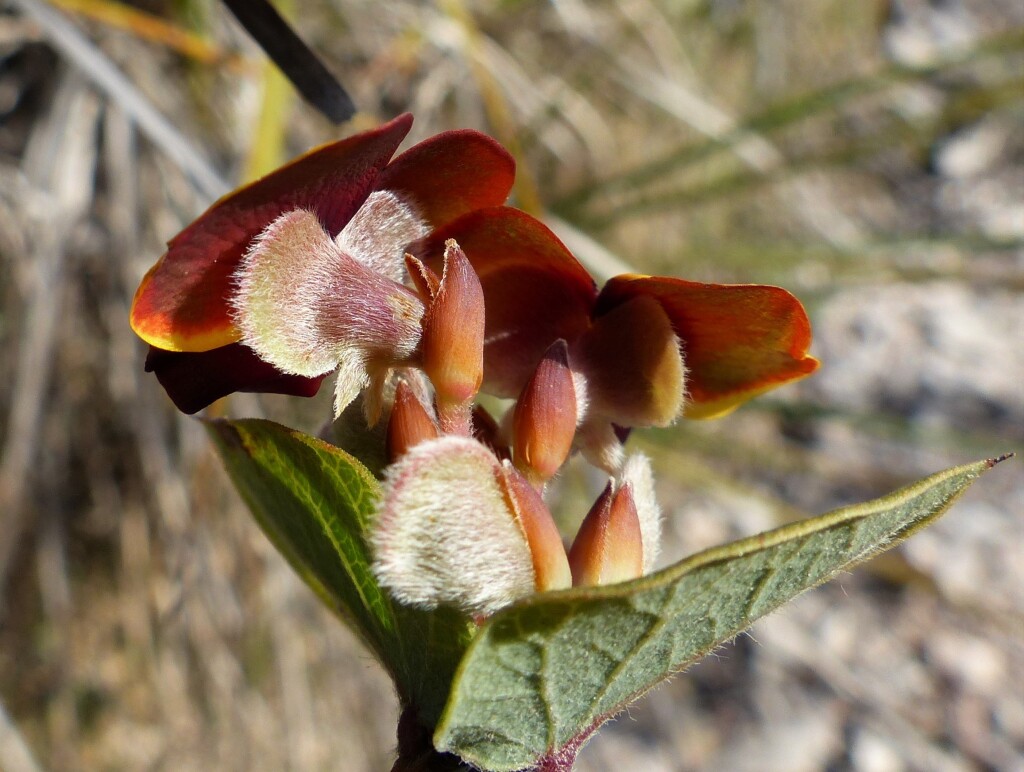Platylobium montanum subsp. montanum
Weakly erect or scrambling shrubs, not rooting at nodes. Leaves generally all opposite; base shallowly to deeply cordate, less often truncate or rounded; petiole 2–5(–8) mm long. Flowers (and fruits) commonly produced; pedicels 5–15(–20) mm long; bracteoles inserted 0.5–2 mm below receptacle; calyx 5–7 mm long, upper lobes 3–5 mm wide. Flowers Sep.–Dec.
VRiv, GipP, Gold, CVU, GGr, NIS, EGL, EGU, WPro, HSF, HNF, MonT, VAlp. Also NSW, ACT. Widespread and common understorey shrub in open forest and woodland, on ranges in north-eastern and central Victoria, with outlying populations at Mt Oberon and the Grampians.
Similar to and often difficult to distinguish from Platylobium reflexum when sterile (see note under that species). Plants may also closely resemble P. parviflorum, which is generally distinguished by its relatively narrower leaves that are typically not cordate, the shorter and more prominently striate bracteoles, and less densely hairy calyx.
 Spinning
Spinning
